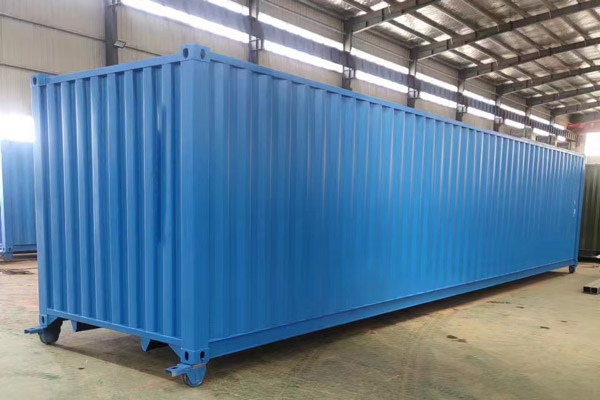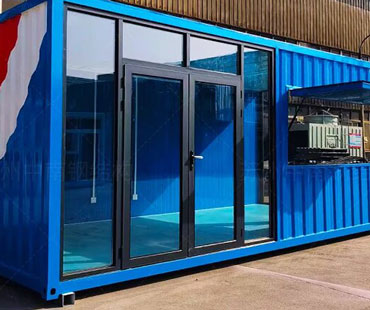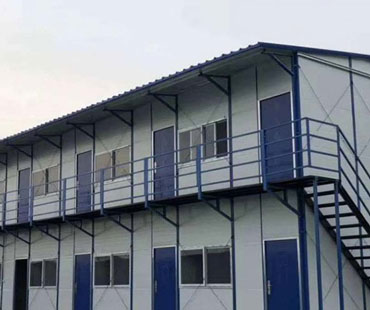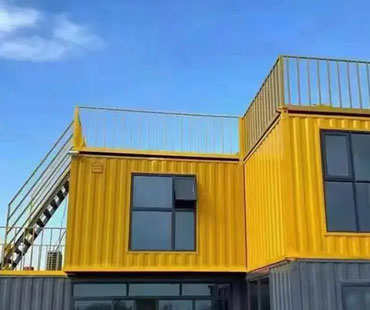In the ever-evolving landscape of global manufacturing and construction, containerized factory buildings have emerged as a transformative solution. Utilizing repurposed shipping containers, these modular structures offer a flexible and efficient alternative to traditional factory designs. As industries worldwide seek innovative ways to optimize production and reduce costs, the adoption of containerized factory buildings presents both significant opportunities and notable challenges in the international market.
Opportunities in the International Market
1.Cost-Effectiveness and Speed of Construction
One of the most compelling advantages of containerized factory buildings is their cost-effectiveness. Traditional factory construction can be a lengthy and expensive process, often requiring substantial investments in materials, labor, and time. In contrast, containerized factories can be assembled quickly and at a fraction of the cost, allowing businesses to reduce their capital expenditures. This rapid construction timeline is particularly beneficial in markets experiencing high demand fluctuations, enabling companies to respond swiftly to changing conditions.
2.Sustainability and Environmental Benefits
As sustainability becomes a central focus for industries worldwide, containerized factory buildings align perfectly with eco-friendly practices. Repurposing shipping containers reduces waste and minimizes the carbon footprint associated with new construction materials. Additionally, these structures can be designed to incorporate renewable energy sources, such as solar panels, and efficient waste management systems. By adopting containerized factories, companies can enhance their corporate social responsibility profiles and appeal to environmentally conscious consumers.
3.Flexibility and Scalability
Containerized factory buildings offer unparalleled flexibility, allowing businesses to adapt their facilities to meet evolving production needs. Modular designs enable companies to easily expand or reorganize their spaces without the need for extensive renovations. This adaptability is particularly advantageous in sectors characterized by rapid technological advancements, where manufacturers must constantly innovate to stay competitive. Furthermore, containerized factories can be relocated as needed, offering businesses the opportunity to explore new markets without significant capital investment.
4.Global Market Accessibility
The international market for containerized factory buildings is expanding as businesses seek to establish operations in diverse geographical locations. These structures can be easily transported and deployed in various regions, making them particularly attractive for companies looking to enter emerging markets. Additionally, the ability to customize containerized factories to suit local regulations and environmental conditions enables manufacturers to optimize their operations globally.

Challenges in the International Market
1.Regulatory Hurdles
Despite the many advantages, containerized factory buildings face regulatory challenges that vary significantly across countries. Zoning laws, building codes, and safety regulations can differ widely, creating complexities for companies looking to establish containerized facilities in new locations. Navigating these regulatory landscapes requires thorough research and often involves collaboration with local authorities, which can slow down the implementation process.
2.Perception and Acceptance
In some regions, containerized factory buildings may still carry a stigma associated with temporary or substandard constructions. Overcoming this perception is essential for wider acceptance in the international market. Manufacturers need to invest in marketing and education efforts to demonstrate the durability, safety, and efficiency of containerized structures. Establishing successful case studies and showcasing innovative designs can help change public perception and encourage adoption.
3.Logistical Challenges
Transporting and assembling containerized factory buildings can present logistical challenges, especially in remote or underdeveloped regions. Ensuring that the necessary infrastructure is in place for transportation and assembly is critical. Additionally, companies must consider supply chain disruptions that can affect the availability of containers and other materials needed for construction. Effective logistics planning and partnerships with reliable suppliers are essential to mitigate these challenges.
4.Market Competition
As the popularity of containerized factory buildings grows, competition in the market is intensifying. Many companies are exploring this innovative approach, leading to an influx of providers offering similar solutions. To stand out, businesses must focus on quality, customization, and customer service. Innovating with design, technology integration, and sustainable practices can help companies differentiate themselves in a crowded marketplace.
Containerized factory buildings represent a significant opportunity for businesses looking to innovate and adapt in a rapidly changing global market. Their cost-effectiveness, sustainability, flexibility, and global accessibility make them an attractive option for manufacturers across various industries. However, navigating regulatory hurdles, overcoming perceptions, addressing logistical challenges, and standing out in a competitive landscape are essential for successful implementation.
As industries continue to evolve, the adoption of containerized factory buildings is likely to grow, contributing to a more sustainable and efficient manufacturing future. By embracing this innovative approach, companies can not only enhance their operational capabilities but also position themselves as leaders in the global market, ready to tackle the challenges and opportunities of the 21st century.


